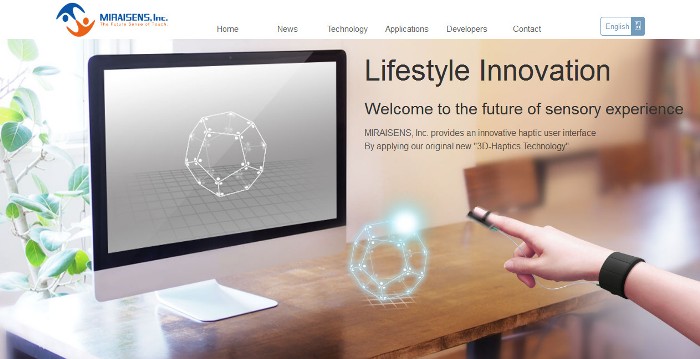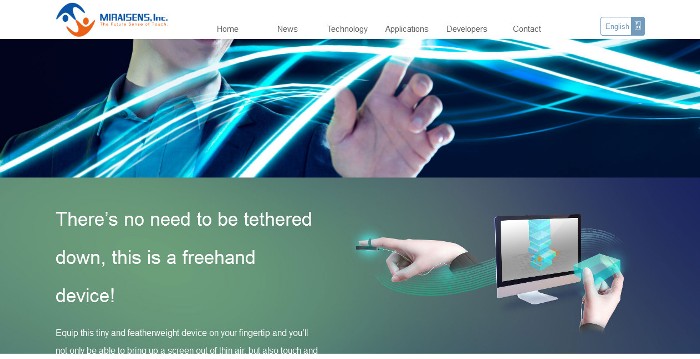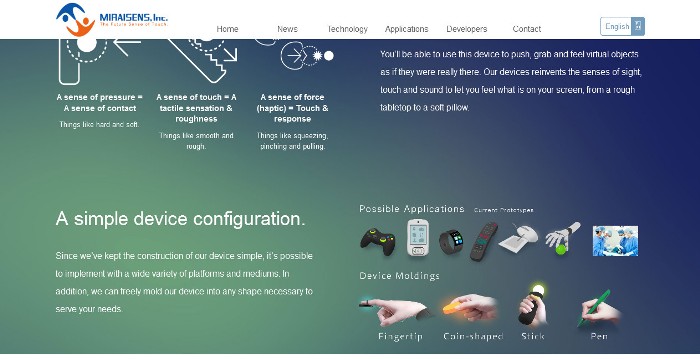Move Over Air Gestures, Touchable 3D Technology Is Here
When Samsung’s Galaxy S4 flagship smartphone was introduced, many were impressed or were at least playing up the hype of the “air gesture” feature. It was an interesting feature although it already appeared as “floating touch” on a Sony smartphone, the Xperia Sola. Also, not many used it on a regular basis and some even complained that it worked erratically at times.
All these, however, will eventually become passe as a new touchable 3D technology has been developed.
Touchable 3D Technology
A Tsukuba-based Japanese tech company called Miraisens, a spin-off of the National Institute of Advanced Industrial Science and Technology, was able to develop a new version of haptic technology that provides users a sense of touching objects in the 3D world. This is said to be the first technology of its kind. Yes, it’s a form of haptic technology and not some 3D wizardry which may allow you to touch things projected into the air and feel something. However, it can be integrated into 3D systems to create a more realistic system of interaction.
According to its inventor, Norio Nakamura, chief technical officer at Miraisens, this technology works by fooling the brain as it blends images the eye can perceive with different patterns of vibration through a small gizmo attached to a fingertip. The technology is officially called as 3D-Haptics Technology at Miraisen.
This touchable 3D technology is being hyped as something capable of generating touchable 3D imagery but it’s not really how it works. It cannot make holograms or 3D image projections tangible. Instead, it only improves on basic haptic technology. Miraisen’s chief executive and a former virtual reality researcher at Sony, Natsuo Koda, in a press conference said that the technology “will give you a sense that you can touch objects in the 3D world.” One demonstration at Tsukuba showed how a user can feel the resistance of the virtual buttons being pushed.
How It Works
As demonstrated at a press conference in Tsukuba, this technology appears as a three-component setup. It involves a head gear to handle the visual aspect, a box attached to the wrist or arm, and a small device to be worn on the finger or held by the fingers to deliver the specific touch stimulus associated with a specific virtual object. In the demonstration, this finger-held component was a circular device held by the thumb and index finger.
There were four capabilities of this new technology demonstrated by Miraisen. They are as follows:
- Basic Touch Demonstration – This involves pressure sensations, tactile sensations, and kinesthetic force sensations. Pressure sensations creates feedback on the fingertip upon a rapping, tapping, or other similar action. The tactile sensation capability of the technology allows a user to feel the graininess or ruggedness of an object or surface. Kinesthetic force sensations, on the other hand, refer to the sensations normally felt when grasping things tightly, snapping something, or perceiving steadiness.
- 3D Expanse Demonstration – In this demonstration, a user is made to feel a sense of depth, a simulation of a 3D environment that solicits a specific kind of spatial reaction.
- Powerful Pressure Sensations Demonstration – Here, the technology is shown to be capable of creating powerful pressure sensations that greatly stimulate a user’s sense of touch and awareness of a virtual environment or situation. This showcases the capability of the technology to create richer experiences in gaming and virtual world explorations.
- Virtual World Interaction – The fourth demonstration is about creating a sense of being in a 3D world, enabling realistic interactions with virtual objects such as floating buttons.
Applications
This technology has a wide range of applications. For one, it can be used to create richer and more compelling experiences in gaming and virtual tours, especially with virtual reality head gear involved. It can improve the kind of experiences possible with gaming controllers. With further developments, this technology may find its way on smartphones and tablets, to help create a keyboard tactile feedback that is comparable to that of the Tactus morphing keyboard.
On the other hand, the technology can also be used to improve remote surgeries as it can make surgeons have a more realistic experience when doing surgeries through remote monitors and medical robots. Additionally, this technology is deemed to be useful for people with disabilities. It can be integrated in the canes used by blind people to have better way of sensing their environment. It is particularly useful for those with difficulties or problems with their sense of sight. Moreover, Miraisen’s 3D Haptic Technology can also be employed in generating complicated data that can be used to produce 3D models for 3D printing.
Miraisen plans to distribute the open beta of the technology in spring of 2015. The company will be holding multiple exhibits and demonstrations in Japan and the United States to promote the technology. In March 2015, the technology is expected to debut at the Game Developer Conference in San Francisco.


